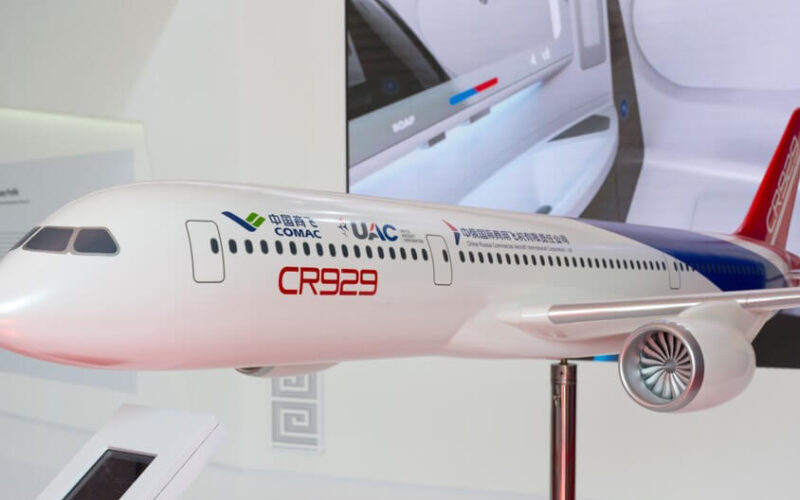The Moscow Central Aerohydrodynamic Institute (TsAGI) in Russia has completed another wind-tunnel testing phase of the CRAIC CR929 twinjet model.
The analysis was mainly focused on a crescent wingtip design of the new Russian-Chinese wide-body aircraft. In order to evaluate the aerodynamic characteristics of the winglet and measure the wing deformation while cruising, the examiners used a videogrammetry technology and reached a cruise speed of Mach 0.85.
“The fundamental difference between the wing of the studied model is the very large narrowing, which reduces the weight of the structure,” Ivan Chernushev, the Project Manager and Head of the Department of Aerodynamics of Aircraft and Missiles at TsAGI, noted in a statement. “Its figure is a record for Russian civil aircraft.”
However, shape of its wings pose a “serious challenge” for engineers, Chernushev explained, adding that it was important to prevent the appearance of stall phenomena at wingtips, both at low and high flight speeds. Previously, engineers used the wind tunnel to test two wing options to determine the cruising aerodynamic characteristics and the influence of deflection on controls.
During the next stage of testing, which is scheduled to be conducted later in 2021, researchers will examine the trailing edge of the wing in cruise flight and the characteristics of modified pylons for the CR929 jet engines.
The base version of the wide-body long haul CR929 passenger aircraft was revealed in 2017. The jet is being designed to carry 250-300 passengers over routes up to 12,000 kilometers. The maiden flight for this Russian-Chinese project, developed by CRAIC, the China-Russia Commercial Aircraft International Cooperation, is reportedly scheduled for 2023.

